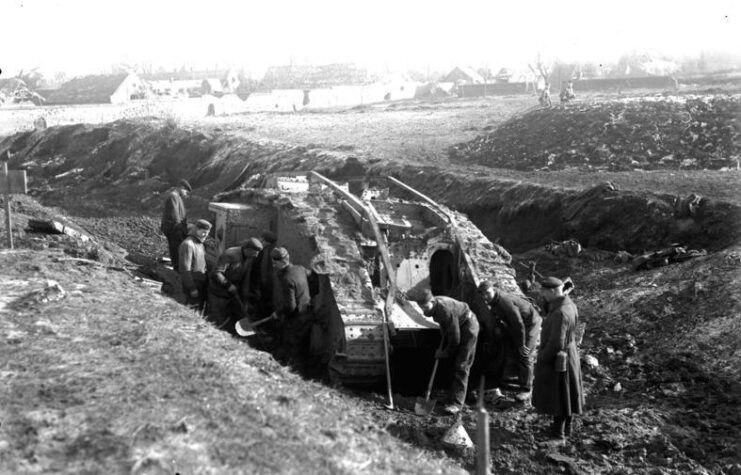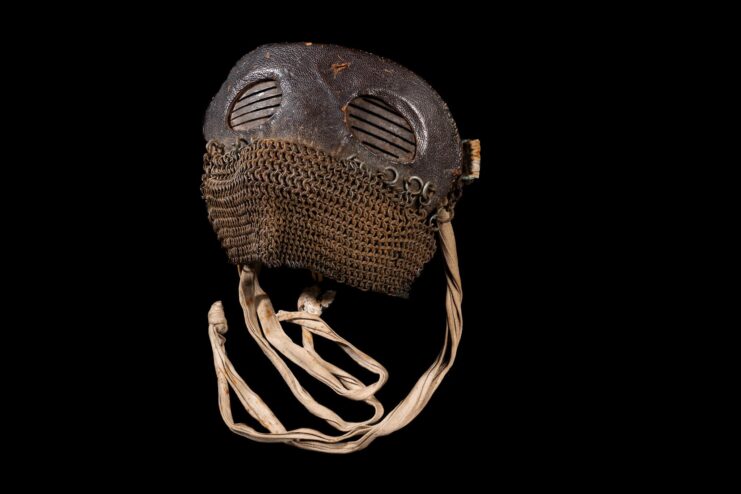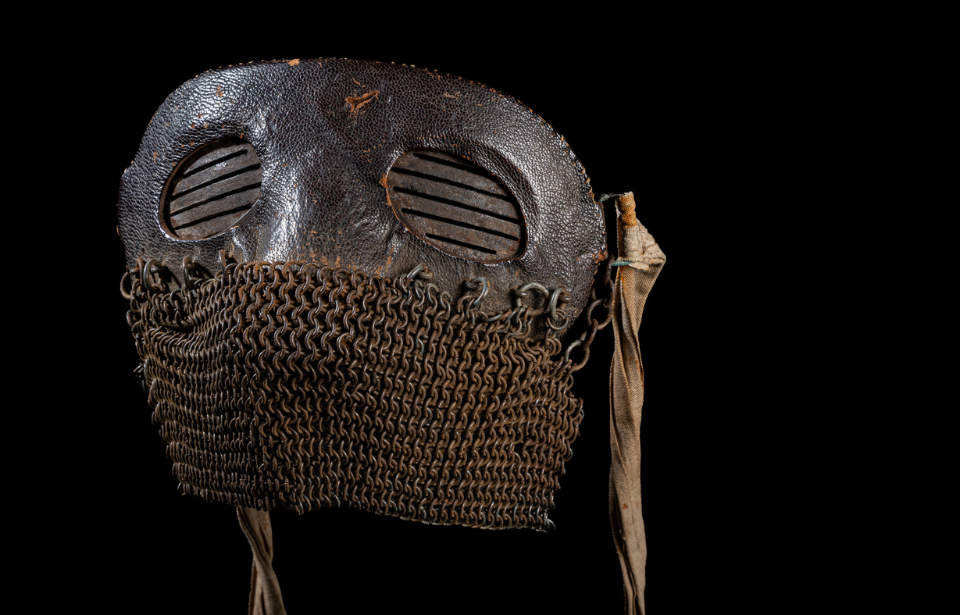The Tank Museum has welcomed a new historical artifact to its collection. A tank crew “Splatter” mask, once worn by Cpl. Walter H. Stickler, was recently donated to the museum, offering a unique look at how crews protected their faces while manning some of history’s earliest tanks.

Splatter masks were issued to crews following the introduction of tanks during the First World War. As aforementioned, this particular one belonged to Stickler, who participated in the Battle of Cambrai, the first combined arms engagement involving tanks. Stickler was a member of a Mark IV tank crew at the time, manning the 6-pounder sponson gun.
For his service during the Battle of Cambrai, Stickler received the Distinguished Conduct Medal (DCM). The citation reads:
“For conspicuous gallantry and devotion to duty in the operation near Marcoing on November 20, 1917. When his tank came under fire of an enemy field battery at a range of 100 yards this NCO continued to fire his 6-pndr gun, despite the fact that the tank had received a direct hit and was in flames. He himself silenced one enemy gun with a direct hit. Throughout the whole operations he set a splendid example to his crew.”

The Splatter mask was made up of two curved steel pieces with eye slits, along with a leather nose section. Below this main part hung chain metal, which was designed to prevent shrapnel known as “splash” or “spalling” from hitting a serviceman’s face.
Stuart Wheeler, a historian at the Tank Museum, stated in a press release, “Donated items like this are important in helping us understand what conditions were like inside the first tanks used in battle, as well as telling the personal stories of the men who served in them.
“The narrow eye slits and chainmail would have added a medieval to what was already a de-humanising experience.”
More from us: Official Trailer Released for Upcoming Film About William Tell
Want War History Online‘s content sent directly to your inbox? Sign up for our newsletter here!
The Tank Museum currently has another Splatter mask on display, belonging to Sydney Hadley, a Mark V tank commander during the Second Battle of Cambrai. It can be viewed in the museum’s “Tank Men” exhibition.
